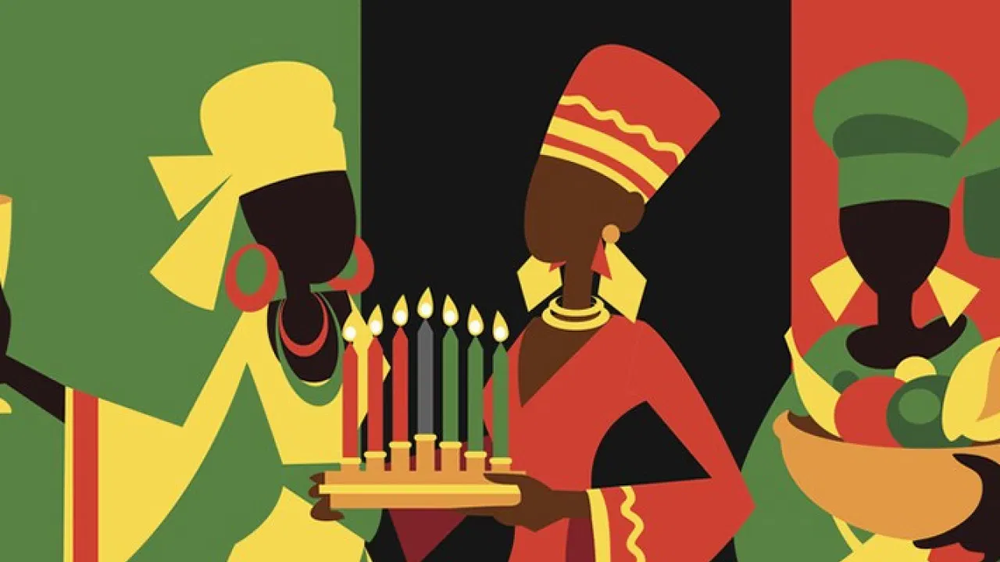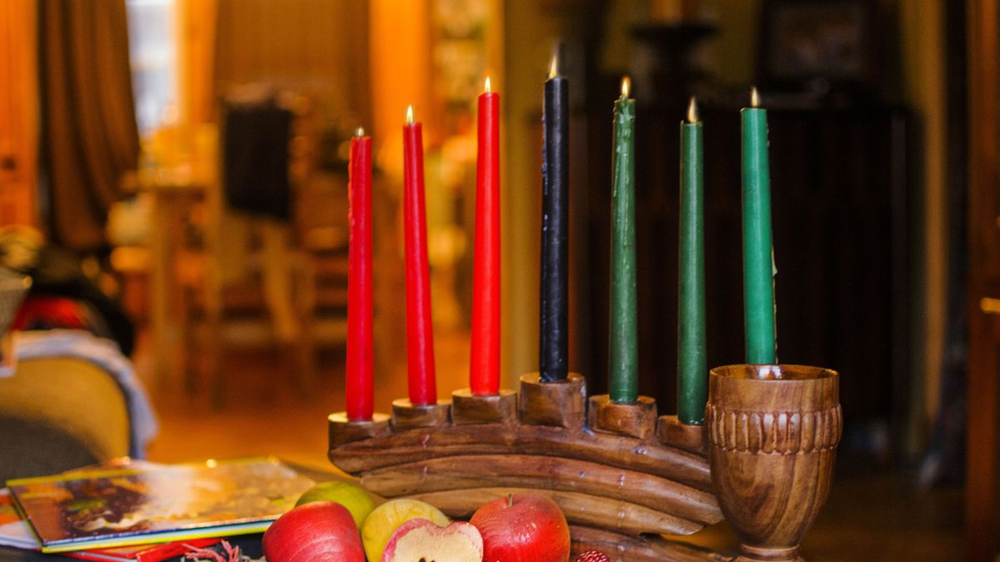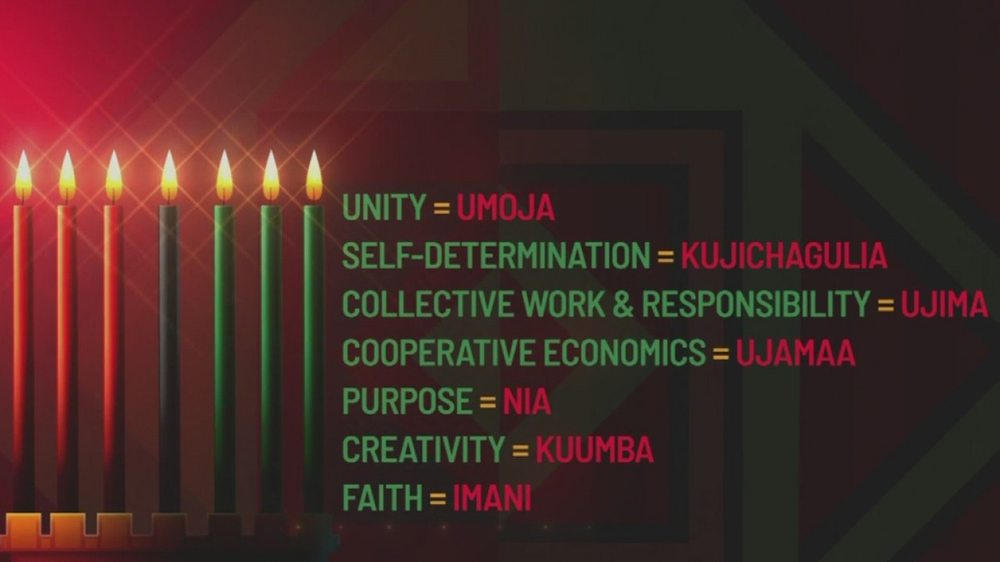The word Kwanzaa comes from the Swahili phrase “matunda ya kwanza” or first fruits, referring to the agricultural harvest festivals that are found throughout Africa. Kwanzaa is a seven-day celebration of African roots observed by people of all faith backgrounds from December 26 through January 1. The African American and Pan African holiday isn’t tied to any religion, but instead is rooted in seven principles known as the Nguzo Saba which strive to inspire Black people to be united, self-determined, accountable for their communities, financially invested in Black-owned businesses, purposeful with their lives, creative and full of faith.

Kwanzaa was birthed out of the Black Power Movement of the 1960s, and founded in 1966 in the United States by activist and educator Dr. Maulanga Karenga. It was formed as a way to empower people to rediscover their African heritage and solidify the expression of the Nguzo Saba, a value system defined by seven key principles. The concepts and symbols of the holiday derive from traditions and practices found throughout Africa and the African diaspora. The language used is Kiswahili, the common language of the Great Lakes region of East Africa, and is one of the most widely-spoken languages in Africa. Kwanzaa does not begin Black history from slavery. It starts with Black people as inventors of civilizations, people who first broke from the animal world, wrote the first basic texts of human knowledge, and more according to Dr. Adam Clark, Associate Professor of Theology at Xavier University.

The main symbols of Kwanzaa are the seven candles, (Mishumaa Sabaa), which represent the seven principles, the candle holder (Kinara), unity cup (Kikombe cha Umoja), placemat (Mkeka), crops (Mazao), corn (Muhindi), and gifts (Zawadi). All items are displayed on the Mkeka and serve as a reminder of how African heritage is built upon tradition. One of the key customs during the holiday is the daily lighting of the Kinara. The candle colors are black, red, and green, and on day one the black candle, also known as the unity candle, is lit. On the second day, the red candle to the immediate right of the unity candle is burned. On day three, the green candle to the immediate left of the unity candle is lit, and so it continues in alteration until day seven is reached. The colors black, red, and green are the colors of African Americans, originally given by civil rights activist and leader of the Pan-Africanist movement Marcus Garvey, which aimed to unite people of African descent globally. In observing Kwanzaa, the black candle symbolizes the people themselves, the three red candles are for the struggle or blood shed in the past, and the three green candles represent the Earth or the abundance of possibilities the future holds.
Each day of Kwanzaa focuses on a particular principle. The first day honors Umoja or unity. That is when the goal of unity in the family, community, nation, and race is declared.
Day two marks Kujichagulia, or self-determination. The heart of this principle is the ability to define, name, create, and speak on behalf of oneself. In spite of limited media portrayal of the Black experience, this principle calls on the people to write their own narrative.
Next is Ujima, which honors collective work and responsibility for the development and preservation of Black communities. It also serves as a lens to see and process the problems of others as your own and challenges the practitioner to seek to solve problems affecting the Black community as a collective.

Ujamaa, or cooperative economics, urges Black communities to invest in themselves financially on the fourth day of Kwanzaa by operating or supporting Black establishments and creating ways to earn profits together. Gifts given to family members on the last day of Kwanzaa are often homemade or purchased books, music, art accessories or other culturally themed products usually from Black-owned businesses.
Day five is dedicated to Nia, which means purpose. The idea behind this is to embolden the participant to make their collective vocation to build and develop their community to restore their traditional greatness.
Kuumba is the sixth day’s theme and represents creativity. It encourages the use of the participants’ talents to beautify and inspire the world at large, while also understanding the importance of preserving the Earth for the following generations.
On its last day Kwanzaa is closed out with Imani: Faith. This principle is not associated with any dogma or doctrine, but is a moment to wholeheartedly believe in the participants’ people and the righteousness and victory of their struggle.
The holiday is a beautiful time to reflect and celebrate the history of Black people and the beauty found within. It inspires unity and faith in ourselves and our people. We wish those who celebrate a beautiful and healing Kwanzaa.
Powered by WPeMatico


